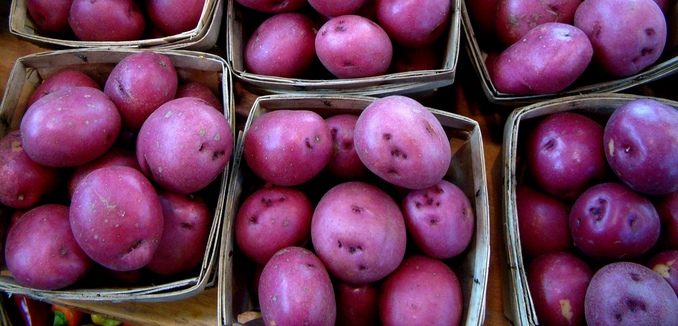Are you ready for violet-colored potatoes? How about orange tobacco? Researchers at Israel’s Weizmann Institute of Science have figured out how to produce betalain pigments in plants and flowers that don’t normally have them.
If you’re thinking, “Who needs violet tomatoes?” you should know that red-violet and yellow betalain pigments contain healthful antioxidant properties. They’re also the basis for natural food dyes for products such as strawberry yogurt.
Antioxidant activity is 60 percent higher in betalain-producing tomatoes than in average ones, said Prof. Asaph Aharoni of Weizmann’s Plant and Environmental Sciences Department, who teamed up with Dr. Guy Polturak for the pigment research.
“Our findings may in the future be used to fortify a wide variety of crops with betalains in order to increase their nutritional value,” he said.
Betalain pigments also protect plants against gray mold, which annually causes crop losses worth billions of dollars. The Weizmann study showed that resistance to gray mold rose by 90 percent in plants engineered to make betalains.
The technical details of the pigment-producing process involved taking betalains made by cactus fruit (as well as flowers such as bougainvillea and veggies such as beets), and applying RNA sequencing and other advanced technologies to identify a previously unknown gene. The scientists then adapted that gene to plants that don’t normally make those particular pigments.
The research was exact enough that scientists could turn the fruit of a tomato purple but leave the leaves their normal green.
There are less health-related aspects to the research as well, Aharoni says. For example, creating ornamental plants with colors that can be altered on demand.
The research may have benefits in the pharmaceutical industry too. When plants start manufacturing betalains, they convert the chemical tyrosine into an intermediate chemical called L-dopa, a starting point for making drugs such as morphine.
The research team included Noam Grossman, Yonghui Dong, Margarita Pliner, and Ilana Rogachev of Weizmann’s Plant and Environmental Sciences Department and Maggie Levy, David Vela-Corcia and Adi Nudel of the Hebrew University of Jerusalem.
(via Israel21c)
[Photo: VasenkaPhotography / Flickr]




